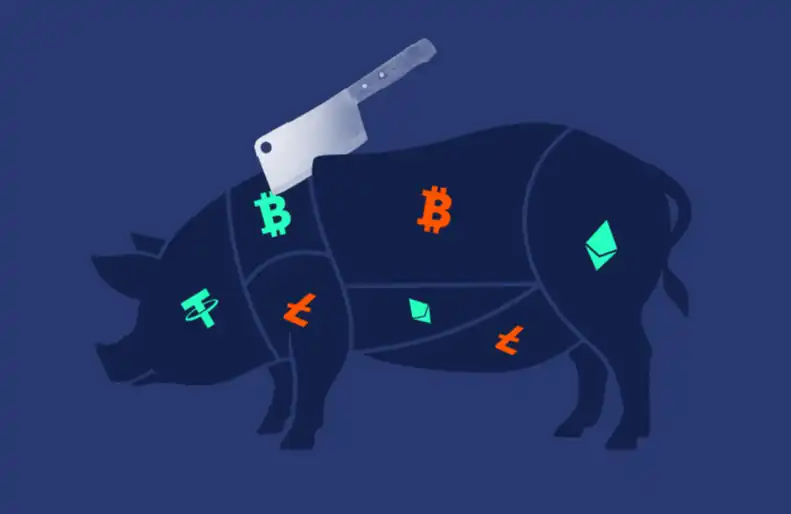What is the relationship between Silvergate and cryptocurrency? What is the reason for the scandal?
Original author: Matt Levine, Bloomberg
Original title: Silvergate Had a Crypto Bank Run
Translated by: Leo, BlockBeats
Recently, Silvergate Capital Corporation, the holding company of crypto-friendly bank Silvergate Bank, announced that it will delay the submission of its annual 10-K report for the 2022 fiscal year. Silvergate stated that "the company is currently analyzing certain regulatory inquiries and investigations related to the company." Subsequently, many crypto companies and trading platforms, including Coinbase, Circle, Tether, and Galaxy Digital, have distanced themselves from Silvergate; while in the capital market, Silvergate's US stocks suffered a sharp decline last night. Bloomberg's crypto journalist Matt Levine wrote an article analyzing the reasons behind Silvergate's "bank run", and BlockBeats has compiled it as follows:
Silvergate's close relationship with cryptocurrency
The basic way to buy cryptocurrency is to use US dollars to purchase a portion of BTC. Of course, there may be other channels available, but the main idea is that if you are bullish on BTC, you will spend some US dollars to buy a portion of it, and as it rises (or falls), you will sell it for US dollars.
If you are a cryptocurrency enthusiast or an institutionalized cryptocurrency trader, you may often find yourself frustrated with the flow of US dollars. Cryptocurrency trading around the world is 24/7 and you can use smart contracts to automatically send cryptocurrency assets, which is usually an unauthorized and loosely regulated activity. However, if you want to buy cryptocurrency with US dollars, you need to use the US dollar financial system, which may make native cryptocurrency users uncomfortable. You may need to transfer money through a bank, but banks are not open 24/7. If you try to buy cryptocurrency by transferring money from a bank account, some banks may ask you annoying questions.
Of course, there are solutions to this problem. One solution is to deposit your US dollars into a trusted large-scale cryptocurrency trading platform, and then use the US dollars in your exchange account to buy and sell cryptocurrencies. The trading platform holds a large amount of US dollars and cryptocurrencies for its customers. When you buy cryptocurrencies, the exchange deducts some US dollars from your account and adds some cryptocurrencies to your account; when you sell, the opposite happens. The biggest problem with this solution is that sometimes large and trusted cryptocurrency trading platforms are not trustworthy, and they may lose or steal your assets. Another problem is that when you deposit US dollars into a trading platform, the platform needs to store the assets somewhere. It needs to store customers' US dollars in some cryptocurrency-friendly banks so that they can be returned when needed.
Another solution is stablecoins: instead of keeping your dollars in a bank, you can buy stablecoins that are pegged to the US dollar, convert them to cryptocurrency, and then use the stablecoins, which are usually worth $1, to buy and sell cryptocurrencies. However, when using this method, you also have to trust the stablecoin issuer, which is not a stable-friendly approach (there are risks involved in calculating stability), and the stablecoin issuer needs to keep the money somewhere, so here again, you need a crypto-friendly bank.
Another solution is bank fraud, but don't do that.
In summary, the industry needs a crypto-friendly bank, and for large US crypto trading platforms and traders, that bank is typically Silvergate Bank, which is owned by Silvergate Capital Corp. This bank is very friendly towards crypto, not only accepting deposits from crypto trading platforms and traders, but also establishing its own crypto settlement payment network. Through this "payment network", if both you and I have an account at Silvergate, and I want to buy some BTC from you using USD, we can use Silvergate's payment network to deduct USD from my account and add it to your account to complete the USD portion of the transaction. Below is Silvergate's description of its SEN (Silvergate Exchange Network).
We designed SEN as a network for cryptocurrency trading platforms and investors, enabling efficient and seamless flow of USD between SEN participants around the clock. In this regard, SEN can be considered as the first cryptocurrency infrastructure solution.
SEN's core function is to allow participants to transfer US dollars from their SEN account to another participant's SEN account and view the fund transfer received from their SEN counterparty. The counterpart relationship between cryptocurrency traders has been established on SEN to facilitate US dollar transfers related to such transactions.
Compared to traditional bank electronic fund transfers such as wire transfers and ACH transactions, SEN transfers occur almost instantly, while the former may take several hours to several days. Our proprietary cloud-based API combined with our online banking tools allows customers to effectively control their fiat currency, transact through SEN, and automatically interact with our technology platform.
This method of transferring US dollars through banks is very popular among cryptocurrency investors: it is 24/7, cloud-based API, and belongs to the cryptocurrency trading platform, etc.
Silvergate's Business Model
Therefore, Silvergate's features have attracted a large amount of cryptocurrency assets. If you are a cryptocurrency trading platform or company, you will find it very attractive to deposit money into Silvergate because they are friendly to you, like cryptocurrency, which many other banks are not; they can remit to your cryptocurrency trading counterpart at 2 am on Saturday, which many other banks cannot do; they are a real bank, regulated by US banking regulators, with audited financial statements and capital regulation to prevent your funds from being lost, which is definitely not the case for many cryptocurrency trading platforms and stablecoin issuers.
This presents a very simple "narrow bank" business model for Silvergate:
-Attracted a large amount of deposits from cryptocurrency trading platforms and investors, they do indeed need a friendly bank that does not pay interest.
- Invest your deposits in very safe assets, US Treasury bonds and Federal Reserve reserves, because you have cheap deposit funds and can get rich returns without taking big risks.
Actually, everyone takes a little more risk than this. From the asset side of the balance sheet, the obvious risk that Silvergate has to bear is the temptation of lending with encryption as collateral: its customers (cryptocurrency traders and trading platforms) hold a large amount of BTC, and they may want to borrow dollars at a high interest rate. Silvergate holds a large amount of dollars (from its customers), which is a natural fit. Does Silvergate do this?
Our SEN leveraged products allow our crypto clients to borrow USD directly from banks to provide liquidity to support BTC trading activities using BTC as collateral. We call this SEN leveraged direct lending. In the SEN leveraged direct lending structure, the crypto service provider holds the borrower's BTC as a custodian, and the bank uses SEN to deposit the loan directly into the borrower's account on the trading platform. In addition, the bank also provides loans collateralized by BTC to crypto industry companies for their funds and other businesses, which we call SEN leveraged indirect lending. In the indirect lending structure, the borrower uses BTC to collateralize the loan with the bank, and the loan financing and collateral clearing may or may not be done through SEN.
As of the end of 2022, the total amount of SEN leveraged commitments is 1.1 billion US dollars, of which about 300 million US dollars seems to have been withdrawn. In January, Silvergate stated: "All of our SEN leveraged loans continue to perform as expected, with no losses or forced liquidations."
For Silvergate, a more mundane risk is the conventional old interest rate risk. Silvergate can purchase other relatively safe assets, such as Treasury bills, US agency securities, mortgage-backed securities, municipal bonds, to earn higher returns instead of depositing clients' money in the Federal Reserve or Treasury bills within a month. This seems to be the main risk that Silvergate faces. As of September 30, 2022, the company's balance sheet shows about $11.4 billion in "securities," namely bonds: municipal bonds, mortgage-backed securities, institutional and government bonds. At the same time, there are approximately $1.4 billion in "loans," namely $300 million in BTC loans plus some real estate loans.
Silvergate's Cryptocurrency Woes
For several months, US authorities have been intensifying efforts to sever ties between banks and high-risk cryptocurrency companies, fearing that the financial system may suffer serious losses one day. They were slow to react.
Silvergate Capital Corp. said on Wednesday that it needs more time to assess the extent of the damage caused by last year's crypto winter on its finances, including whether it can continue to survive. On Thursday, the stock plummeted about 30% in pre-market trading.
Silvergate has reported a loss of 1 billion US dollars in the fourth quarter and said that this number may be even higher. The company is still calculating the cost of quickly selling assets to repay the Federal Home Loan Bank System's advance payments, and it may also need to reduce the value of some remaining assets.
Silvergate, headquartered in La Jolla, California, wrote in a regulatory filing that this could result in "insufficient capital." "The company is evaluating the impact of these subsequent events on its ongoing operations," it said.
This is from a file, the problem is:
-Silvergate holds a large amount of cryptocurrency deposits: as of the end of September, there were $13.2 billion in deposits, most of which were interest-free deposits.
-Then, the crypto crash happened, and cryptocurrency investors retrieved their money from the trading platforms, which in turn retrieved the money from Silvergate. As of the end of December, interest-free deposits decreased from $12 billion to $3.9 billion.
-Silvergate needs to come up with approximately $8 billion in cash to pay for these withdrawals.
Silvergate borrowed $4.3 billion in cash from the Federal Home Loan Bank of San Francisco, a government-chartered institution that primarily provides short-term secured loans to banks in need of cash. The borrowing from FHLB was mainly by crypto banks at the end of 2022 and the beginning of 2023, which has caused controversy.
Silvergate obtained the remaining funds by selling a series of bond portfolios: at the end of September, it had $11.4 billion in bonds, of which $8.3 billion were "available for sale" (an accounting term meaning that Silvergate must be marked at fair value on its books), and other bonds were "held to maturity" (meaning that Silvergate can be marked at cost without worrying about changes in market value). As of the end of December, the company had only $5.7 billion in bonds, all of which were available for sale, and the rest were sold.
This, however, has raised a problem, as the value of these bonds is lower than the cost price paid by Silvergate, mainly due to a significant increase in interest rates in 2022, which means that Silvergate has incurred losses in the sales.
In order to adapt to the sustained low deposit levels and maintain a highly liquid balance sheet, Silvergate sold $5.2 billion in bonds for cash proceeds in the fourth quarter of 2022, which also resulted in a loss of $751.4 million from securities sales in the fourth quarter of 2022.
This means that Silvergate must confirm the losses of the bonds it holds, as it has been holding some of these bonds until maturity (without confirming losses). Now the company must account for them as available-for-sale assets: "In addition, the company recorded impairment charges of $134.5 million and expects to sell $1.7 billion of securities in the first quarter of 2023 to reduce borrowing."
BTC loans remain strong, but that's not the focus. The result is that Silvergate's net loss in the fourth quarter was $1.05 billion.
One core feature of bank regulation is capital requirements. If you are a bank and you have $100 in deposits and issue $100 in loans, but one of those loans defaults and you can only recover $98, then you do not have enough money to repay all depositors, which is very bad. What regulators do is require a bank that issues $100 in loans to have at least $92 in deposits to fund those loans, with the remaining $8 coming from bank shareholders. Then, if some loans default and the bank can only recover $98, it can still repay all $92 in deposits, with only the shareholders taking a loss.
Capital requirements are mostly "risk-based": there must be approximately $8 of capital for every $100 of "risk-weighted assets", with different assets having different risk weights. A bank that provides a large amount of reasonable mortgage and commercial loans may require $8 of capital for every $100 of loans, while a bank that holds a large amount of BTC may require $100 of capital for every $100 of assets. Very safe assets, such as US Treasury bonds, have a risk weight of zero: they are very safe, and regulators are not concerned about you losing money on them.
However, there is a rule that supports this, called the "leverage ratio". Basically, regardless of the risk weight of these assets, banks need at least $5 in capital for every $100 in assets to be considered "capital adequate". If you are a small bank with only $95 in deposits invested in US Treasury bonds, you still need to put your own $5 in.
Silvergate's asset situation.
Holding BTC loans, Silvergate's assets are still very safe: they are mainly composed of high-rated bonds, which are likely to be fully repaid. As of September, Silvergate's situation is:
155 billion US dollars in assets;
141 billion dollars of debt;
13 billion US dollars of shareholder equity (approximately 8.6% of assets);
The regulatory leverage ratio is 10.7%.
The total risk-based capital ratio is 45.5% because the risk weight of its large assets is zero.
45.5% of capital ratio looks very safe, and 10.7% of leverage ratio also looks good. However, later on, Silvergate lost a large amount of deposits and had to sell assets, resulting in a net loss of 1 billion US dollars. The rest is:
114 billion US dollars in assets;
108 billion US dollars of debt;
Shareholders' equity of 571.8 million US dollars (about 5.0% of assets);
The regulatory leverage ratio is about 5.1%;
The overall risk capital ratio is 57%.
57% of the capital adequacy ratio looks very safe. The 5.1% leverage ratio seems slightly higher than the regulatory requirement of "capital adequacy" of 5%, but if Silvergate only incurs an additional loss of $19 million, this number will be lower than 5%.
From yesterday's Silvergate document:
After December 31, 2022, certain events occurred that will have a negative impact on the reporting period and unaudited results previously disclosed in the profit report, including the sale of additional investment securities beyond what was previously expected and disclosed in the profit release, primarily to fully repay the company's outstanding prepayments to the Federal Home Loan Bank of San Francisco. The company sold additional debt securities in January and February 2023, which are expected to be recorded as other losses outside of temporary impairment of the securities portfolio. These additional losses will have a negative impact on Silvergate Bank's regulatory capital ratios and may result in the company and the bank being undercapitalized. In addition, the company is evaluating the impact of these subsequent events on its ability to continue operating within twelve months after the release of its financial statements. Given the current business and regulatory challenges, the company is currently reevaluating its business and strategy.
Silvergate has had to sell more bonds to repay loans from the Federal Home Loan Bank, which has resulted in more losses. These are all closely related, but its current leverage ratio appears to be below 5%, so it is "well-capitalized". Technically, it is not yet the "end of the world" if this number is above 4%, Silvergate will still be "well-capitalized", but this is not good as it points in the wrong direction.
If you have a bank, you don't want to go in the wrong direction.
Investors and business partners have been withdrawing one after another, causing the stock price to plummet by as much as 55%. Meanwhile, Coinbase Global Inc., Galaxy Digital Holdings Ltd., Paxos Trust Co., and other cryptocurrency companies have decided to stop accepting or initiating payments through Silvergate, as the outflow of funds may threaten the bank's main source of deposits and the platform for cryptocurrency participants to transfer funds to each other.
Coinbase stated on social media: "Given recent developments, out of an abundance of caution, Coinbase will no longer accept or initiate payments to Silvergate, and will facilitate cash transactions for institutional clients with other banking partners."
Over the past year, we have talked a lot about the topic of bank collapses related to encryption. Typically, when a bank related to encryption collapses, executives will say it is a "bank run": it has valuable assets, but customers suddenly want their money back, so it has to sell these assets, and therefore they lose value, so it does not have enough money to repay all customers. I have always been skeptical of these claims because, overall, these valuable assets are like "magic beans" invented by encryption-related banks themselves. The assets of encryption-related banks, such as Terra, FTX, Celsius, and so on, are mostly based on confidence in the shadow banking system itself, and when this confidence disappears, these assets disappear as well.
From Traditional Finance to the Spread of Cryptocurrency
Meanwhile, in the regulated US banking industry, the idea of a "bank run" is somewhat peculiar. Bank runs happen in the movie "It's a Wonderful Life," but in the real world of big US banks, the specific scenario of hearing bad news about your deposit bank, rushing to withdraw your funds, and the bank having to sell assets to raise cash, ultimately leading to insolvency, is quite strange. In modern US banking, there is deposit insurance to reassure small depositors. There are programs - the Federal Home Loan Bank System, the Federal Reserve discount window - designed to ensure that solvent banks have access to cash to pay depositors. And there is capital and prudent regulation to ensure banks' solvency.
But Silvergate is experiencing a real run on the bank! It is not losing money because of foolish BTC loans - BTC loans are good - but because of normal banking activities, borrowing short and lending long (absorbing deposits from crypto companies, buying US and municipal bonds). Silvergate's assets are normal assets, and if depositors leave their money in Silvergate, its bonds will mature with enough money to pay them back. However, if depositors suddenly demand their money back, Silvergate has to sell its long-term assets at a huge loss to pay them back.
Today's story is that Silvergate's customers withdrew their funds because they were concerned about Silvergate, "given recent developments, out of caution." This is a typical bank run behavior, but it is not the reason they withdrew their funds at the end of 2022 (when the trouble began). They withdrew their money because the cryptocurrency had collapsed: Silvergate's cryptocurrency trading platform customers faced withdrawals from their own customers, so they withdrew their money from Silvergate. The problem lies with the customers-cryptocurrency trading platform, not Silvergate.
Last week, US regulatory agencies warned banks:
The Federal Reserve Board, the Federal Deposit Insurance Corporation, and the Office of the Comptroller of the Currency (collectively referred to as the Agencies) have issued a statement regarding the liquidity risks associated with certain funding sources of entities involved in crypto assets, as well as some effective practices for managing such risks:
Deposit provided by entities related to encrypted assets for the benefit of customers (end customers) related to encrypted assets. The stability of such deposits may be driven not only by the behavior of end customers or the dynamics of the encrypted asset industry, but also by entities related to encrypted assets, which are direct trading counterparts of banking organizations. The stability of deposits may be affected by factors such as periods of stress, market volatility, and vulnerabilities in the encrypted asset sector, which may or may not be unique to entities related to encrypted assets. When end customers react to market events, media reports, and uncertainty related to the encrypted asset industry, such deposits are susceptible to large and rapid inflows and outflows. This uncertainty and the resulting volatility in deposits may be exacerbated because entities related to encrypted assets make inaccurate or misleading statements about deposit insurance, causing confusion among end customers.
It's as if they knew this would happen, regulators did not explicitly state "therefore, do not allow banks to conduct encrypted transactions", in fact, they did quite the opposite: "banks are not prohibited or prevented from providing banking services to any particular category or type of customer where permitted by law or regulation."
I believe this is the spread from the crypto crash to the traditional financial system: a regulated US bank is concerned about its "ongoing ability to operate" and is selling US Treasuries, municipal bonds, and mortgage-backed securities to repay debt. This is a small-scale spread: the bank is like a crypto bank (which I don't think it is), for example, because Silvergate has to sell billions of dollars in bonds, your mortgage rates will increase significantly. But this is definitely the kind of spread that regulators want to prevent, but now they have clear evidence that the spread is real.
Original article link
Welcome to join the official BlockBeats community:
Telegram Subscription Group: https://t.me/theblockbeats
Telegram Discussion Group: https://t.me/BlockBeats_App
Official Twitter Account: https://twitter.com/BlockBeatsAsia


 Forum
Forum Finance
Finance
 Specials
Specials
 On-chain Eco
On-chain Eco
 Entry
Entry
 Podcasts
Podcasts
 Activities
Activities
 OPRR
OPRR









